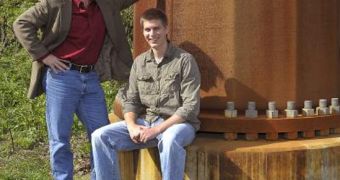For anyone living in the countryside, or at the edge of large cities, the sight of massive electricity poles is a very familiar one. These large structures, which can at times be as much as 12 feet wide and 100 feet (33 meters) high, are extremely resilient to a host of factors, but they are by no means invulnerable. They can crumble under the load of ice and strong winds, and carry with them a major drawback.
Each time one of them falls, others around follow suit, until a larger construction prevents the cascade effect. Now, Iowa State University (ISU) civil engineers propose an innovation that would ensure such accidents, or sabotages, do not affect the electricity supply to the general population. They also carry the added benefit of making the entire power grid more flexible, in the most literal sense of the word. The new power structures could also provide a method of protecting the delicate infrastructure that carries and delivers electricity to millions of people and countless businesses.
“There are long stretches of these transmission lines across the countryside. If you take down one of the poles, you take 10 miles of poles out with it. It's very important to protect these structures,” explains ISU assistant professor of civil, construction and environmental engineering, Jon Rouse. Together with civil engineering graduate student Casey Faber, the expert devised a new type of pole that is more flexible, more resistant, cheaper and easier to install than its massive counterparts. But the most important innovation is that these new poles would percent cascade failures, eliminating the need for the very expensive dead-end structures electricity companies currently use.
“We're designing a structure based primarily on its deformation ability rather than its strength,” Rouse adds. “If a structure can deform sufficiently, it can allow the rest of the system to use reserve strength from other structures. It allows the next pole down the line to share the load of ice, wind, a broken line or an attack, rather than forcing one pole to withstand the load on its own,” he explains further. The new approach could be just what the US national power grid needs, in order to become more efficient, and also physically-stronger. “The country is in the midst of a major shift toward wind power. We'll be building a lot of transmission lines over the next 20 years. We really need to address these reliability and security issues,” concludes Rouse.

 14 DAY TRIAL //
14 DAY TRIAL //